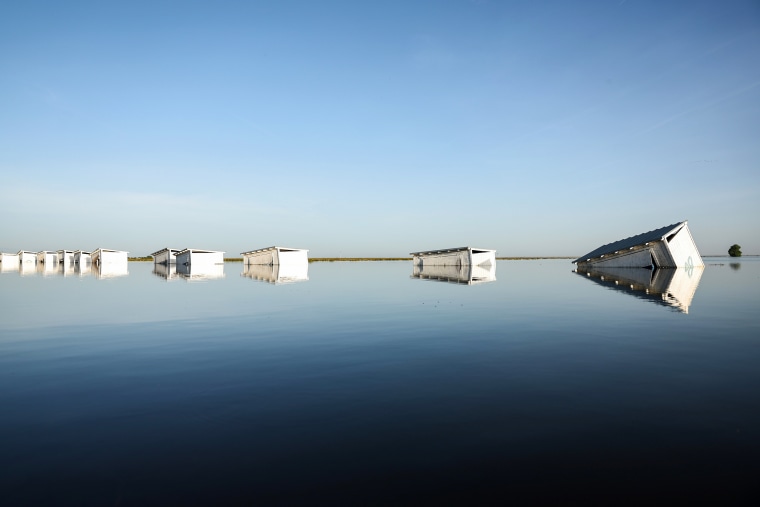As ocean surface temperatures soar to record highs, the World Meteorological Organization said Wednesday it expects a shift toward El Niño by this fall, which could shake up weather patterns and trigger more extreme weather events in the U.S. and other parts of the world.
Forecasters expect the temporary El Niño pattern to alter rainfall patterns, elevate average air temperatures and contribute to more intense storm systems. The El Niño pattern, which is a temporary and natural climate anomaly, will layer on top of the warming attributable to human-caused climate change. Both trends push average air and sea temperatures higher.
Daily sea surface temperatures last month reached highs not seen in at least four decades of recordkeeping, according to a data visualization from the University of Maine’s Climate Reanalyzer.
“As surface temperatures rise, that adds more fuel to the atmosphere and that fuel is heat and moisture,” said John Abraham, a professor and program director in the school of engineering at the University of St. Thomas who studies ocean temperatures. “It intensifies weather patterns. It means the weather becomes more extreme.”
The combination of El Niño and the long-term trend of global warming could produce new record-setting global temperatures and exacerbate the impacts of climate change.
For the past three years, the globe has been locked in a La Niña trend, which has offered something of a reprieve. The WMO forecasters say the trend is now neutral, but forecast that there is an 80% chance that El Niño will take hold by September.
“We just had the eight warmest years on record, even though we had a cooling La Niña for the past three years and this acted as a temporary brake on global temperature increase,” WMO Secretary-General Petteri Taalas said in a statement.
The National Oceanic and Atmospheric Administration’s Climate Prediction Center last month issued an El Niño watch and a prediction similar to the WMO.
El Niño is associated with cool, wet weather in the southern U.S. and warm conditions in the northern states. Parts of the U.S., such as the Ohio River Valley, could see a prolonged dry stretch as El Niño takes hold.
Ocean temperatures are determined by analyzing data from a network of monitoring buoys and robotic devices that track temperatures as they travel up and down within the ocean. These devices send data back to researchers and help forecasters predict weather.
The rising sea surface temperatures are an indication of the transition to El Niño.
“They’re blowing the doors off the prior record,” Abraham said of those measurements. “The warming of the ocean is the most important thing that determines weather. So, this isn’t a problem for seals and polar bears; it’s a problem for us and our societies and agriculture.”
The oceans absorb most of the energy from human-caused warming. More than 90% of the heat imbalance in Earth’s energy inventory ends up in the oceans, according to the United Nations Intergovernmental Panel on Climate Change.
Ocean surface temperatures tend to fluctuate and are subject to shorter-term trends and natural climate variability like El Niño. But much of the added heat is contained beneath the sea surface, said Sarah Purkey, an assistant professor of physical oceanography at the Scripps Institution of Oceanography at the University of California, San Diego.
“Ocean heat content is the most important metric we should be paying attention to when we think about climate change because it’s really at the heart of what this global imbalance is,” Purkey said. Below the surface, “we’ve had this really steady warming signal.”
